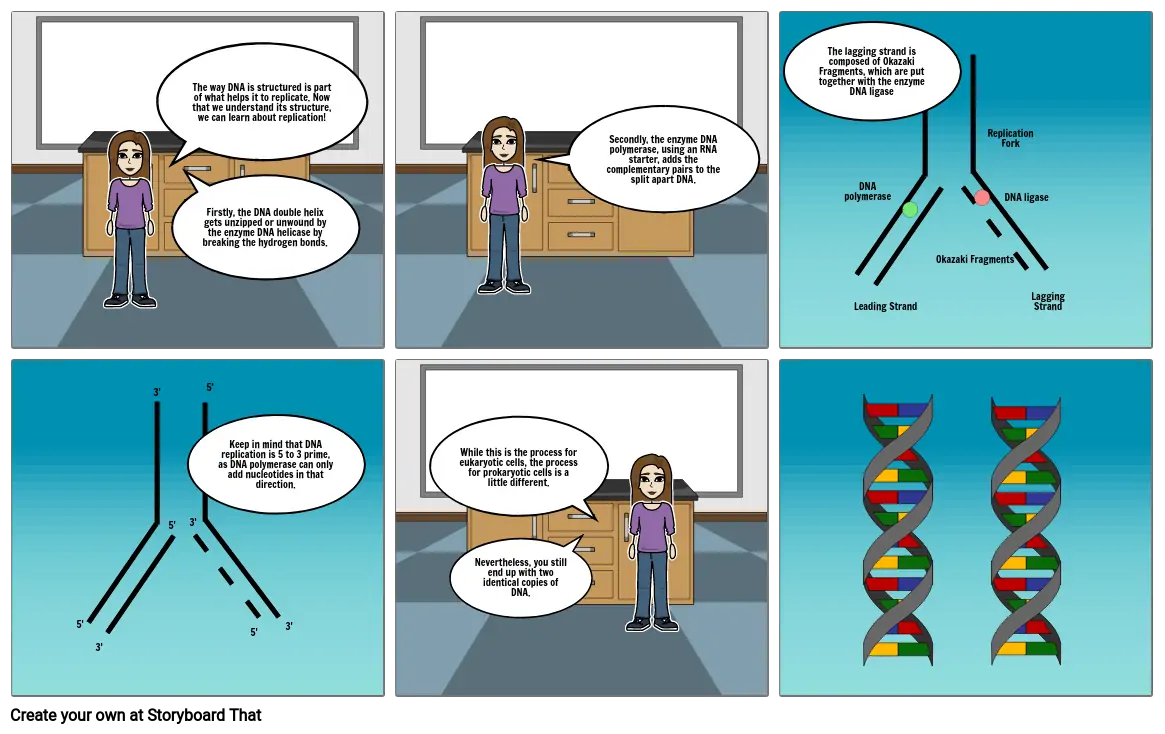Biology

Montāžas Teksta
- 3'
- The way DNA is structured is part of what helps it to replicate. Now that we understand its structure, we can learn about replication!
- 5'
- Firstly, the DNA double helix gets unzipped or unwound by the enzyme DNA helicase by breaking the hydrogen bonds.
- Secondly, the enzyme DNA polymerase, using an RNA starter, adds the complementary pairs to the split apart DNA.
- The lagging strand is composed of Okazaki Fragments, which are put together with the enzyme DNA ligase
- DNA polymerase
- Leading Strand
- Okazaki Fragments
- Replication Fork
- DNA ligase
- Lagging Strand
- 5'
- 3'
- 5'
- 3'
- Keep in mind that DNA replication is 5 to 3 prime, as DNA polymerase can only add nucleotides in that direction.
- 5'
- 3'
- While this is the process for eukaryotic cells, the process for prokaryotic cells is a little different.
- Nevertheless, you still end up with two identical copies of DNA.
Izveidoti vairāk nekā 30 miljoni stāstu shēmu

